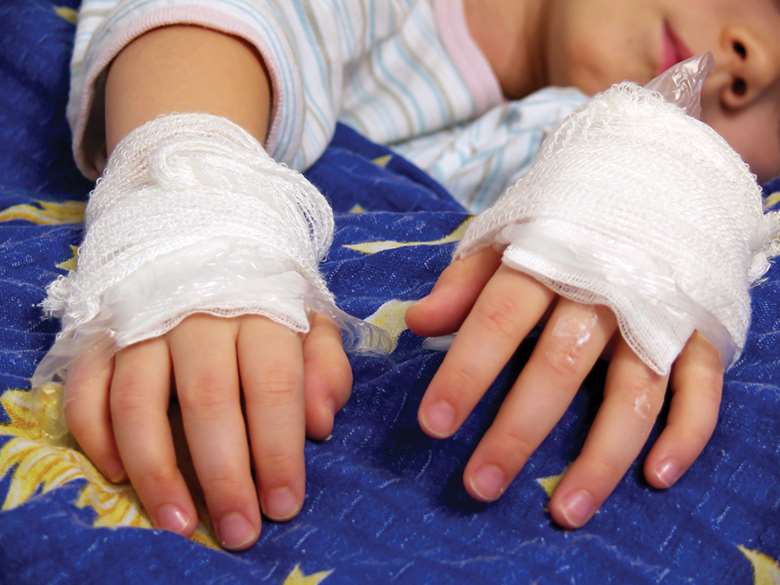Skills for the job: How to prevent serious burns
Pamela Prentice
Thursday, September 19, 2013
Devising creative ways of communicating with parents can help prevent serious burns and scalds in children.

What is the scale of the problem?
Thousands of children and young people are treated in hospital for burns and scalds each year. Nearly all of these accidents happen in the child's home and are highly preventable. Children under the age of five make up 85 per cent of hospital admissions for burns and scalds for 0- to 15-year-olds.
A study from the University of Nottingham found that children from deprived households are 80 per cent more likely to have a scald compared to those in better-off homes. Boys were found to be more at risk, as were children of teenage parents and children from single parent homes.
What is the impact on children and families?
Burns and scalds are among the most painful and disfiguring injuries that children can suffer. As they grow, some children who suffer severe burns will need years of repeated, painful skin grafts and will be scarred for life. The mental scars often never go away and these accidents can affect the whole family. Many families, where the child's injuries are severe, break up under the strain. Bath water scalds make up a smaller proportion of injuries, but they are one of the worst injuries children can suffer. Experts say that the impact of a scald over more than one fifth of the body - not uncommon if a small child falls into a bath of hot water - has a similar impact on the child's body as being hit by a bus.
Why do young children suffer burns and scalds?
The top four causes for under-5s are:
- Hot drink scalds – the most common
- Scalds from other hot fluids (such as caused by kettles and saucepans)
- Burns from household appliances
- Scalds from hot tap water – these are usually the most severe injuries.
Babies and children's skin is thinner than adults, which is why they can so easily be burned. Serious accidents are also closely related to the stages of development. A baby may wriggle in a parent's lap or grab at a cup. A newly walking toddler may just be able to reach the top of the cooker hob or hot drink that looks out of reach. Toddlers' heads are heavy in relation to the rest of their bodies so toppling into a hot bath if they reach for a toy can happen, or as they learn to climb they may climb in and not be able to get back out.
What are the prevention messages that you can get across to families?
- Put hot drinks out of reach each time – look for places at home where you can put hot drinks down you know are safe
- Put your baby down somewhere safe before you pick up your hot drink. Even little babies can wriggle and grab unexpectedly
- Put cold water in the bath first and top up with hot water, and check the temperature is not too hot
- Hair straighteners get as hot as an iron, so put them out of reach after you have used them
- Keep children away from hobs and ovens even after they have just been turned off. A safety gate on the kitchen door can help when someone is cooking.
Make sure your messages hit home. No one likes to be preached to, so present information as a reminder and link it to the child's stage of development such as grabbing, walking or climbing. Give simple practical advice that people can build into their daily routine - parents often think making changes will take time they don't have. Drip feed advice by offering it in context - for example, if you are having a cup of tea with a parent, mention how easy it is for the child to grab it and how easy that is to prevent. Use surprising facts that grab attention and motivate parents to take action. If parents have poor literacy, use picture-based resources to get messages across.
TOP TIPS
- Give parents prevention messages that have context
- Always keep hot drinks out of reach
- Make the point that small changes can be really effective when they become habits
- Link messages to the child's development stage
Pamela Prentice, campaigns manager, Child Accident Prevention Trust




